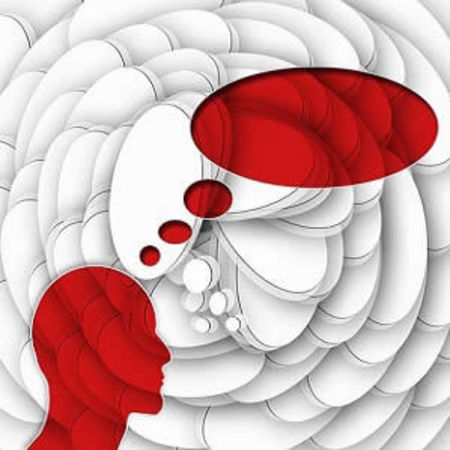Albert Einstein once said, "Education is not the learning of facts, but the training of the mind to think."
Critical thinking is basically the capacity to be deliberate about thinking. This aspect is increasingly becoming the focus of undergraduate medical education but is not quite effectively addressed in graduate medical education.
This could be a serious thing as without critical thinking, physicians, especially residents, could end up making cognitive errors which in turn could lead to diagnostic errors, especially in an environment such as the intensive care unit (ICU).
The fact is that critical thinking skills can be easily taught. However, because of a lack of data to support a standard for teaching critical thinking, there are five strategies that we can implement to create an effective framework to teach critical thinking in the ICU:
When critical thinking is absent, there is more reliance on heuristics and this often leads to cognitive biases which in turn can lead to diagnostic errors. This results in increased patient morbidity and mortality.
Approximately 10 percent of in-hospital deaths are due to diagnostic errors and diagnostic errors are also the number one cause of medical malpractice claims. It has been proven that cognitive errors are the source of diagnostic errors in nearly 75% of cases.
A report from the Risk Management Foundation reports that over half of malpractice cases that they evaluated as assessment failures included narrow diagnostic focus, a failure to establish differential diagnosis and reliance on a chronic condition of a previous diagnosis. These results clearly show that there is a need to increase focus on healthcare professional education and training in the diagnostic process.
The five strategies highlighted above are based on educational principles that have been found to be quite effective in teaching critical thinking in the ICU. These strategies are not necessarily dependent on one another and can often overlap. But since the ICU is a high acuity, fast paced, high stakes environment, it is imperative to use critical thinking. While it is a fact that empirical evidence to guide such thinking is scarce, these strategies can hopefully prove to be practical and effective in the ICU.
Healthcare providers in the ICU have to deal with life and death decisions daily. It is thus important to teach trainees to think about problems and uncover cognitive biases that could potentially lead to diagnostic error.
Source: American Thoracic Society
Image Credit: Pixabay
Critical thinking is basically the capacity to be deliberate about thinking. This aspect is increasingly becoming the focus of undergraduate medical education but is not quite effectively addressed in graduate medical education.
This could be a serious thing as without critical thinking, physicians, especially residents, could end up making cognitive errors which in turn could lead to diagnostic errors, especially in an environment such as the intensive care unit (ICU).
The fact is that critical thinking skills can be easily taught. However, because of a lack of data to support a standard for teaching critical thinking, there are five strategies that we can implement to create an effective framework to teach critical thinking in the ICU:
- Making the thinking process explicit. This can be achieved by helping learners understand two primary cognitive processes - Type 1 which is an intuitive pattern-recognising process and Type 2 which is an analytic process.
- Discussing cognitive biases which could include premature closure and minimising biases by expressing uncertainty and keeping differentials broad.
- Modeling and teaching inductive reasoning. This can be done by utilising concept and mechanism maps and teaching learners how this differs from hypothetico-deductive reasoning.
- Stimulating critical thinking by asking How or Why questions which can help trainees uncover their thought processes.
- Assessing and providing feedback on the learner's critical thinking.
When critical thinking is absent, there is more reliance on heuristics and this often leads to cognitive biases which in turn can lead to diagnostic errors. This results in increased patient morbidity and mortality.
Approximately 10 percent of in-hospital deaths are due to diagnostic errors and diagnostic errors are also the number one cause of medical malpractice claims. It has been proven that cognitive errors are the source of diagnostic errors in nearly 75% of cases.
A report from the Risk Management Foundation reports that over half of malpractice cases that they evaluated as assessment failures included narrow diagnostic focus, a failure to establish differential diagnosis and reliance on a chronic condition of a previous diagnosis. These results clearly show that there is a need to increase focus on healthcare professional education and training in the diagnostic process.
The five strategies highlighted above are based on educational principles that have been found to be quite effective in teaching critical thinking in the ICU. These strategies are not necessarily dependent on one another and can often overlap. But since the ICU is a high acuity, fast paced, high stakes environment, it is imperative to use critical thinking. While it is a fact that empirical evidence to guide such thinking is scarce, these strategies can hopefully prove to be practical and effective in the ICU.
Healthcare providers in the ICU have to deal with life and death decisions daily. It is thus important to teach trainees to think about problems and uncover cognitive biases that could potentially lead to diagnostic error.
Source: American Thoracic Society
Image Credit: Pixabay
References:
Hayes, Margaret M. Chatterjee, Souvik. Schwartztein, Richard M. (2017) Critical Thinking in Critical Care: Five Strategies to Improve Teaching and Learning in the Intensive Care Unit. Annals of American Thoracic Society; Apr;14(4):569-575. doi: 10.1513/AnnalsATS.201612-1009AS.
Latest Articles
Critical Care, Critical Thinking
Critical thinking is basically the capacity to be deliberate about thinking. This aspect is increasingly becoming the focus of undergraduate medical education but is not quite effectively addressed in graduate medical education.



























